#basking shark
Text

While most fish cannot regulate their body temperature (known as being ectothermic), basking sharks were recently discovered to be able to (known as being endothermic) which was previously thought to be exclusive to apex predators such as the basking shark's relatives: the mako and great white shark.
#marine animals#marine biology#shark#sharks#fish facts#shark facts#sharkblr#fish#fun facts#science#basking shark
49 notes
·
View notes
Text

Happy #WorldBaskingSharkDay !🦈✨
4K notes
·
View notes
Text
Woah mama! I appreciate the traction of the first shark poll, so here is another for so many beloved friends who did not fit the first one! Shark fans,
I truly did have many of the species listed here in mind with the previous poll, I just did not have the space and had to prioritise some sharks I knew were longtime favourites! But worry not… no more! SHARK FANS COME GET YOUR JUICE!!!!
What shall I do with the info in the two polls? I dunno. Maybe make another poll with even more sharks? Maybe combine the winners and make them fight to the death? Who knows! Let’s see.
#polls#basking shark#frilled shark#great hammerhead shark#hammerhead shark#mako shark#blacktip reef shark#megamouth shark#chain catshark#angel shark#tiger shark#leopard shark#zebra shark#sixgill shark#shark#sharks#my polls
2K notes
·
View notes
Text

looking at this image everyday and reading it like it's an affirmation
#🦈: my posts#🦈: silly#🦈: spinterest#🦈: sharks#sharks#marine life#sea life#sharkies#basking shark#marine biology#sea creatures#basking sharks#sharkposting#shark posting#shark week#i love sharks#1k#1.5k#clarice's chart toppers
2K notes
·
View notes
Note
Any fun facts about basking sharks? (Really big sea puppies)

Cetorhinus maximus or Basking Shark
These are the second largest shark and fish in the world (after the whale shark), they can grow to be 12 m (40 ft) long!
Also like whale sharks, they're ram filter feeders. This means that to catch prey, they simply open their mouths, swim forward, and catch whatever happens to get in their way! This is why they (and other ram filter feeders) tend to have such large mouths. The basking sharks mouth can be up to 1 m (3ft wide).

While sharks are mostly thought to be solitary creatures, a lot of species do school and the basking shark is one of them! They're usually divided by sex (except during periods of mating), and schools of over 100 females have been spotted!


And probably the coolest fact about them- THEY CAN JUMP OUT OF THE WATER. Despite weighing around 5,000 kg (approx. 11,000 lbs) they can breach 1.2 m (4 ft) into the air! It's believed they do this as a method to remove parasites.
#marine biology#marine ecology#animals#science#biology#animal facts#wildlife#marine life#ocean#fun facts#shark#sharks#basking shark#cool sharks#sea creatures#sea animals#marine animals#fish#chondrichthyes#cool animals#cute animals#ecology#zoology#ichthyology#whale shark#sea puppies
1K notes
·
View notes
Text
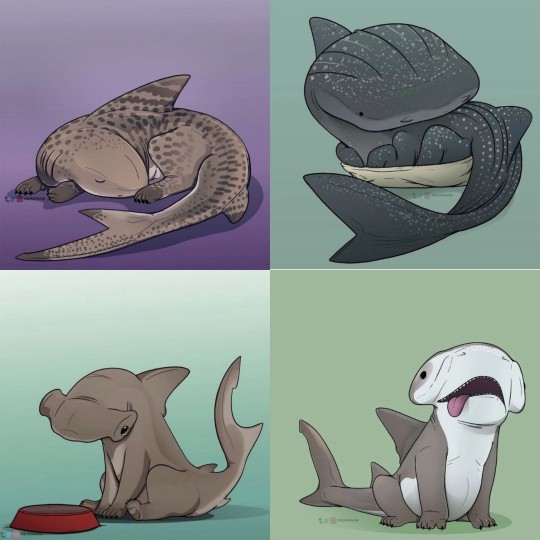


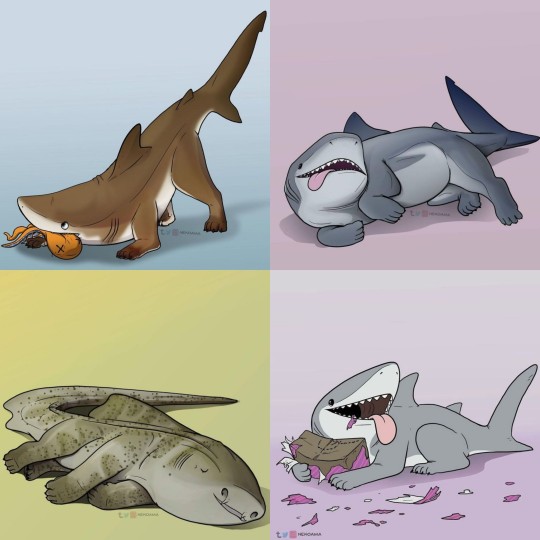

Found on Pinterest 😍😍 had to share!!
🎨: The Art of Ama @nekoama
#shark puppies#shark art#shark illustrations#tiger shark#whale shark#hammerhead shark#bonnethead shark#great white shark#lemon shark#bamboo shark#basking shark#nurse shark#thresher shark#blacktip shark#zebra shark#frilled shark#oceanic whitetip shark#greenland sharks#blue shark#shark blog#sharks#advocacy for sharks#respect the locals#shark post#pinterest#Pinterest art#Pinterest shark
773 notes
·
View notes
Text
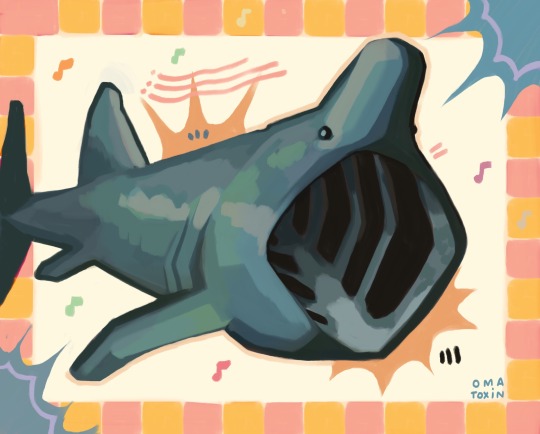
Happy world basking shark day!! he wants to sing you a song!!!
#basking shark#digital art#art#digital drawing#artists on tumblr#illustration#digital aritst#artist#new artist#shark#shark art#fish#fish art#marine life#marine art#basking shark art#omatoxin
521 notes
·
View notes
Text

Lady with an Ermine by Leonardo da Vinci
1K notes
·
View notes
Text
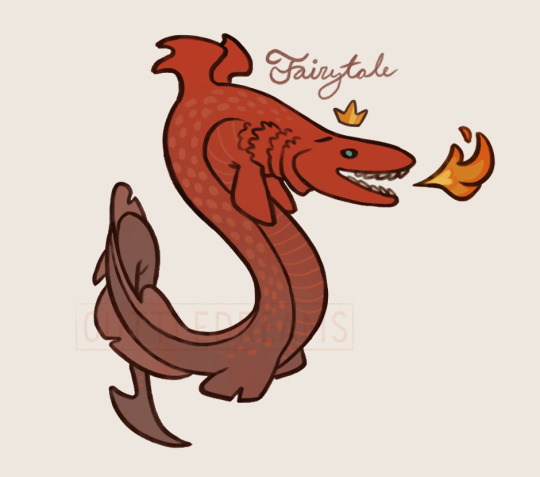

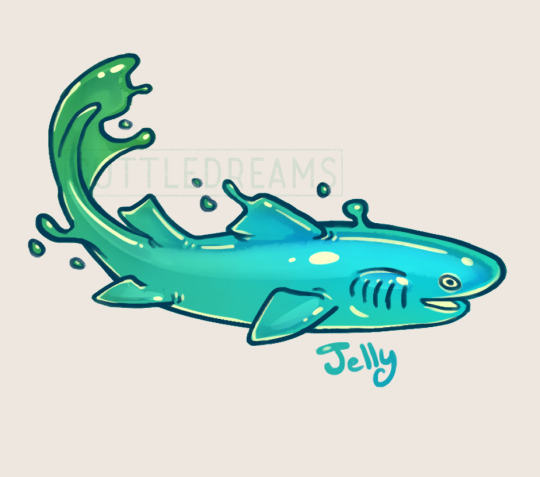
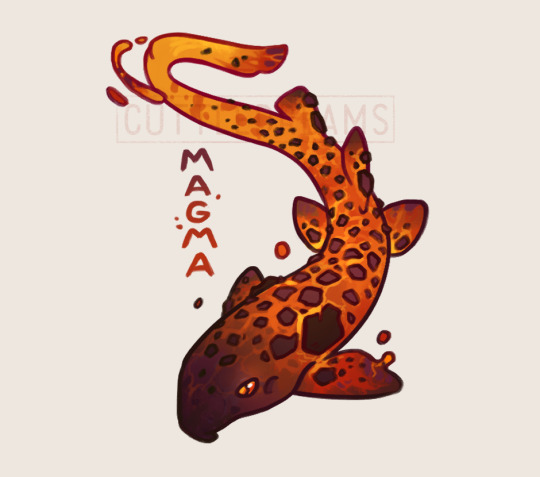
Sharktober!!!!
I won't be doing every prompt since I'm already also doing Invertober but I'm pretty happy with the prompt days I picked out!
Set One:
Day 1: Fairytale Shark (Frilled Shark)
Day 3: Cloud Shark (Basking Shark)
Day 7: Jelly Shark (Greenland Shark)
Day 9: Magma Shark (Epaulette Shark)
Sharktober prompt list is hosted by @requinoesis!
>Prompt List<
#Cuttledreams#sharktober#frilled shark#basking shark#greenland shark#epaulette shark#sharks#sharktober2023
451 notes
·
View notes
Text
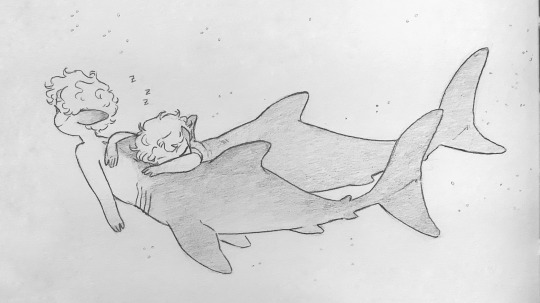
Baby shark Andrew was cranky and Aaron said “okay it’s nap time”
Shark facts and lore/worldbuilding under the cut
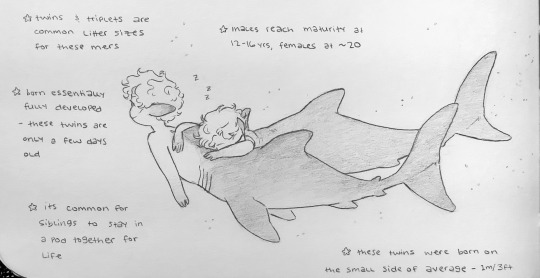
So shark mers can’t actually stop moving for long periods of time but baby mers aren’t born with the ability to swim while sleeping. So they sleep on various pod mates or really anyone that will carry them. Being steadied like this is important for their development since it teaches them to sleep on their own as the get older.
Andrew was separated from his pod/school not too long after birth, and the only reason he made it past the infancy and toddler stages was the kindness of other mers. Other pods of sharks and whales, or mothers with their own children, or a very kind lone gray whale carried him around and took care of him when they found him, for as long as he would let them. Until he got spooked or upset and swam off again. Because of the lack of consistency in his care and the countless times he nearly suffocated in his sleep, Andrew to this day has a harder time sleeping on his own than most grown mers, not for lack of trying. Luckily, once he’s reunited with Aaron and a manta ray Nicky that Aaron tells him is essentially an adopted cousin, it doesn’t take long for Aaron to realize why Andrew is so tired all the time. It’s no harder for him to pull Andrew around on his back now than it was when they were little. And while they’re there, Aaron realizes that yeah, it is kind of nice to have someone he can sleep on, too. Even if he doesn’t really need it. (Nicky offers to piggyback the twins but he is far too smooth and slippery. Which doesn’t seem to be as much of an issue when Andrew takes little power naps on Neil but shh.)
Im sure it’s not uncommon for adult mers to sleep on each other at any age, but if anyone questions why Andrew is always sleeping on Aaron, Aaron gives them a death glare and makes sure Andrew never hears their stupid questions.
#I wonder how long manta rays can swim on their backs#because if they just do it for fun that’d be what Nicky would have to do#swim on his back and hold onto whoever was napping#(which is exactly what Neil does with Andrew. they cuddle)#I want to draw sooooo many mer cuddles now tho#it’s just so sweet#fan art#my art#aftg#all for the game#neil josten#andrew minyard#aaron minyard#nicky hemmick#mer au#sharkdrew au#oops all mers au#basking shark#shark#sharkdrew#mer research notes
493 notes
·
View notes
Text

basking shark!
636 notes
·
View notes
Text

i drew some sharks
individuals under the cut --
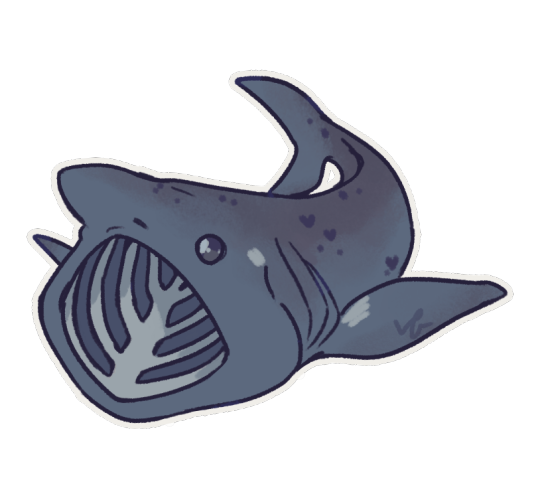




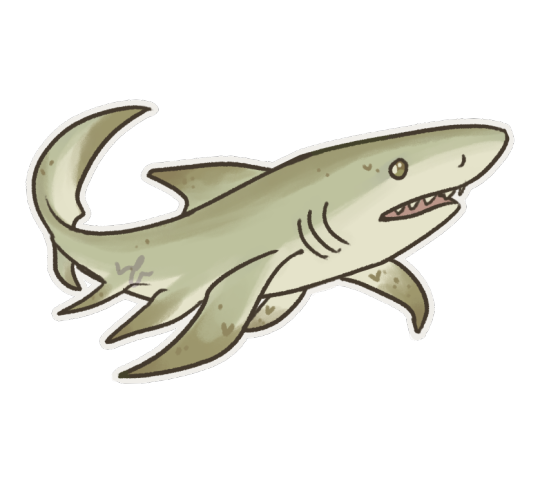
#my art#digital art#sharks#marine biology#basking shark#goblin shark#black tipped reef shark#thresher shark#leopard shark#lemon shark#stickers#ssssharks#i love the creature
493 notes
·
View notes
Text



some sharkies for today 🦈
part 2
EDIT
if you have any concerns about the goblin shark, please go here first
#original art#original drawing#character design#anthro#anthro character#sharks#blue shark#great white shark#basking shark#bamboo shark#goblin shark#hammerhead shark#lemon shark#lowkeiart#my art
466 notes
·
View notes
Text
Fun fact about the basking shark!

they're just little guys
251 notes
·
View notes
Text

Basking sharks have the smallest weight-to-weight brain size of all sharks.
276 notes
·
View notes
Text
Wet Beast Wednesday: basking shark
I'm not feeling too motivated today, so, I'm going to discuss another animal that likes to take it easy: the basking shark. This shark decided it's not into that whole "hunt down prey and fight to live" thing and decided to become a filter feeder instead. It seems to have worked out too, as basking sharks can be found worldwide and are the second largest fish, surpassed only by the whale shark. There is only one extant species of basking shark, but a few extinct species have been discovered.

(image id: a basking shark seen from the side. It is a large, brown shark with a large head and pointed snout. Its mouth is closed)
Cetorhinus maximus is one of only 3 species of filter-feeding shark, the others being the whale shark and the awesomely-named megamouth shark. Basking sharks average 8 meters (26 ft) in length, but can reach up to 11 meters (36 ft). An average adult weighs around 4650 kg (5 tons). They have a typical shark body shape (which has led to them being mistaken for great white sharks), but the mouth anatomy is different. The mouth can open up to a meter wide and appears toothless, though it is actually filled with tiny, conical teeth that appear to serve no purpose in adults. The gill slits are longer than in most shark species and almost completely encircle the head. Like other filter-feeding fish, the basking shark's gills are also used to catch its food. It swims forward with its mouth open and as water passed over the gills, zooplankton and small invertebrates and fish will get caught in the gill rakers, from where they can be swallowed. The basking shark's favorite food is copepods of the order Calanoida, though they will also target other copepods. They can detect their prey with electroreception like other sharks. Because plankton is not known for being fast and adult basking sharks have no natural predators, they aren't known for being particularly speedy. A basking shark on the hunt moves at a blistering 3 km/hr (1.9mph). They can move in fast bursts of speed and occasionally can jump clear out of the water. It's not 100% clear why they breach, but it seems to have a few benefits. It can help dislodge parasites (which is a big issue for basking sharks. They are often covered with scars from lampreys and cookie-cutter sharks) and notably they breach more during mating season, so it may also be used for sexual display. Breaching and the resulting splash may also be used for long-distance communication and threat displays. I remember being a kid watching Shark Week and being told by the TV that great whites are the only shark species that breach and that was just not even remotely true. The basking shark has the lowest brain to body weight ratio of any shark.
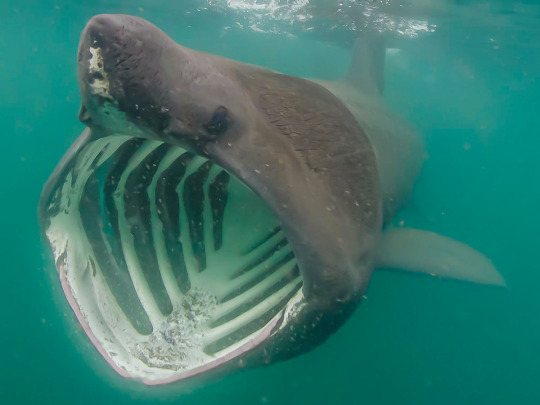
(image id: a basing shark seen from the front with its mouth open. The mouth is very large and white on the inside. Its gill slits can be seen from the inside, looking like large slits in the side of the mouth)
youtube
(video: a basking shark leaping out of the water multiple times)
The name basking shark comes from their typical behavior. They swim slowly at the surface of the water while feeding, leading to sailors thinking they were basking in the sun. They were commonly called sunfish, but the name is no longer commonly used to avoid confusion with the ocean sunfish. While swimming at the surface, they sometimes spin around or swim belly-up. Basking sharks are migratory, traveling toward the poles in summer and toward the equator in winter. It was formerly believed that they hibernated over the winter, but it is now known that they spend their time in deep water. While migrating and in summer, basking sharks display social behavior. They will shoal in groups hundreds strong and can often be found in small groups of similarly-sized fish, usually of the same sex. Not much is known about basking shark mating. They are ovoviviparous, with eggs hatching internally and developing further inside the mother before the pups are born. Gestation is believed to take between 1 and 3 years and a few large pups are born at a time. Pregnant females are very rarely seen and they may spend their time in deep water. There is only a single reported example of a pregnant female being caught and it has 6 pups. The seemingly useless teeth may actually be used in utero, as the unborn pups likely feed on unfertilized eggs after their yolk sacs are consumed. This adaptation has been observed in other ovoviviparous sharks. While females have two ova, only the right one actually functions. The lifespan of basking sharks is estimated to be around 50 years.
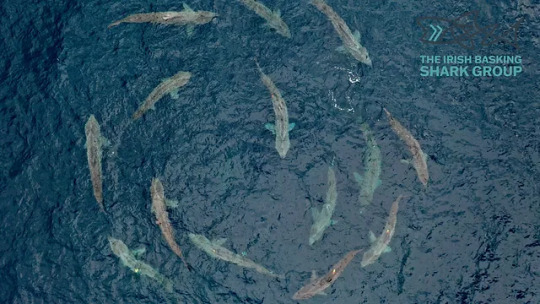
(image id: a group of 14 basking sharks swimming in a circle, seed form above. It is believed that this is a mating display)
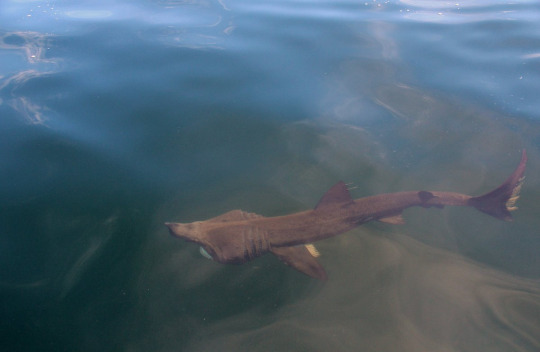
(image id: a juvenile basking shark seen from above. It can be distringuished from an adult by the snout, which is sharp and hooked)
Basking sharks are classified as endangered by the IUCN. They has historically been hunted for their meat, hides, fatty livers, and fins. While there is currently no commercial fishery of basking sharks, they are poached for their fins and have not recovered from overexploitation. Bycatch is an ongoing problem for the sharks. Multiple countries have enacted conservation efforts including legal protection and the enactment of protected areas where fishing is prohibited. Basking sharks pose no threat to humans. They also do not fear humans and have even been known to approach and swim around divers. Basking sharks also appear a lot in the pseudoscience of cryptozoology. I can go into why cryptozoology is a pseudoscience in more detail in another post, but its the study of alleged animals not recognized by science. Basking sharks show up a lot as globsters, unidentified corpses that wash up on beaches or are caught in fishing nets. Basking sharks are responsible for a lot of globsters due to the way their corpses decay. Large amounts of decay happen around the head, which can lead to the mandible bones hanging loose or detaching and the snout decaying to look like a small head on a neck. In addition, the claspers (reproductive organs) of male basking sharks are very large and can be mistaken for limbs. One likely example of this is the Stronsay beast of 1808. Described as a six-legged decaying sea serpent, it is likely that the legs were actually the jaw bones, fins, and claspers of a male basing shark. A more recent example is the Zuiyo-Maru plesiosaur (warning: picture below and it's gross). This carcass was pulled up by the Japanese fishing boat Zuiyō-Maru in 1977 and based on the pictures taken and the word of two Japanese scientists, was thought by some to be an example of a recently-deceased plesiosaur. While the carcass itself was thrown back overboard, some samples were taken for analysis and based on them and anatomical detains from the pictures, it was concluded that the carcass is actually a heavily-decayed basking shark. The "neck" of the carcass is the spine and brain case with the jaws having decayed and fallen off. Further anatomical details such as the presence of cartilage in the fins and body proportions support the carcass being a fin and do not support it being a plesiosaur.
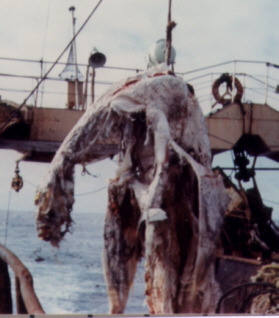
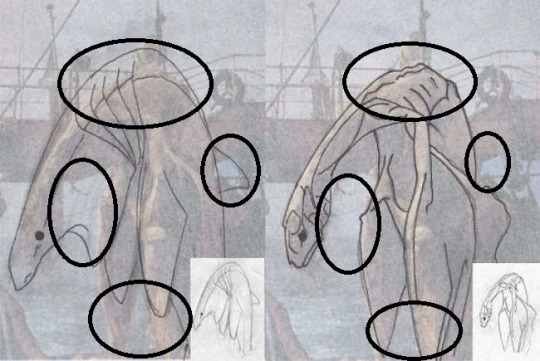
(Image id: top: the Zuiyo-Maru carcass, a large, decomposed carcass hanging rom a hook. It appears to have a long neck and fins. Bottom: a diagram comparing the anatomical features of the carcass and a fresh basking shark)
#wet beast wednesday#basking shark#shark#sharks#fish#fishblr#fishposting#marine biology#biology#zoology#ecology#animal facts#cryptozoology#cryptid#zuiyo-maru plesiosaur#cw animal death#cw dead animal#Youtube
278 notes
·
View notes